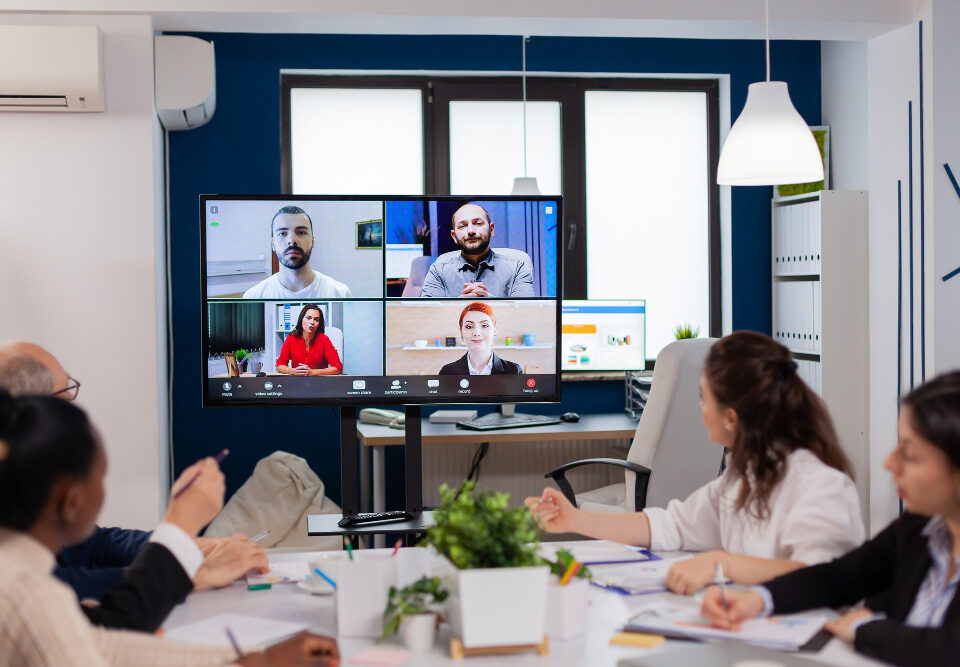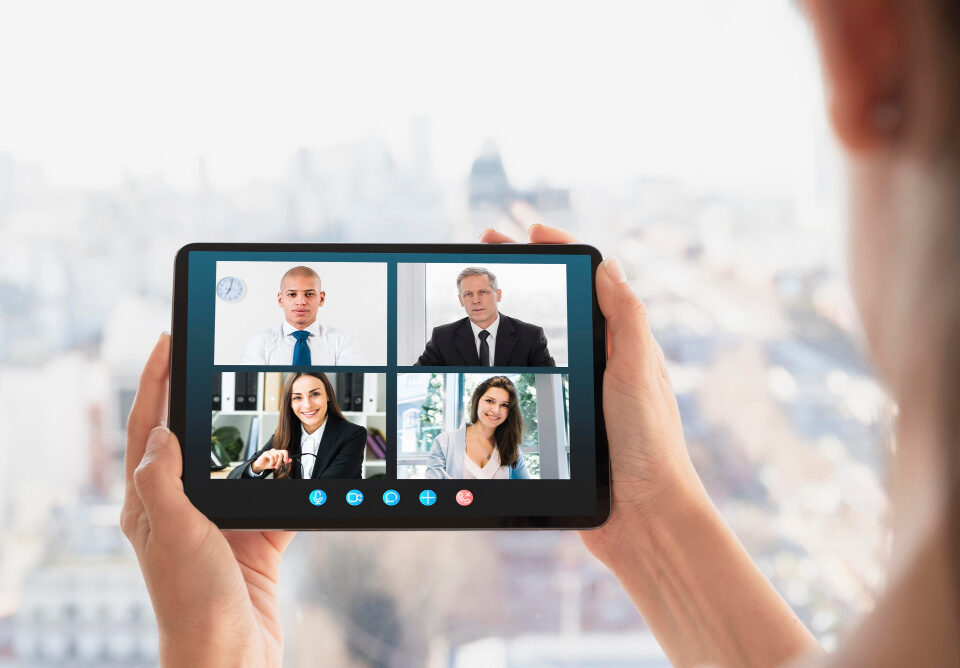- Have any questions?
- +971 4 88 733 70
- sales@datavoiz.com

Seamless Communication: Dubai’s Video Conferencing Trend
January 20, 2024
Seamless Video Conferencing: Enhancing Communication
January 24, 2024Introduction
Welcome to an exploration of the pivotal role played by well-designed meeting rooms in fostering productive collaborative sessions. As professionals dedicate a substantial portion of their time to meetings, the environment in which these sessions unfold profoundly influences productivity. In this article, we’ll delve into the key elements that contribute to an effective meeting room design, offering valuable insights on how thoughtful arrangements and innovative features can enhance teamwork, creativity, and overall success. Let’s uncover the secrets to unlocking the full potential of your collaborative sessions.
The Role of Well-Designed Meeting Rooms
A meeting room transcends its physicality, becoming a pivotal space for fruitful collaborative sessions. It acts as a sanctuary where ideas converge, creativity thrives, and solutions are born. An effective meeting room design establishes the foundation for communication and collaboration, fostering engagement and innovation. The layout, with ergonomically designed furniture and strategically placed whiteboards or screens, facilitates interaction and encourages brainstorming during discussions. Equipping the space with state-of-the-art technology enables seamless communication and collaboration among participants, transcending geographical boundaries.
In essence, a well-designed meeting room has the power to inspire individuals, ignite creativity, and foster productive collaboration among team members. Thoughtful design elements that prioritize comfort, efficiency, and inclusivity create an environment where innovative ideas flourish, leading to more successful outcomes.
Understanding the Purpose and Goals of Collaborative Meetings
Collaborative meetings in the business realm hold immense significance as platforms for collective brainstorming, innovation, and decision-making. These gatherings foster unity, allowing diverse perspectives to intertwine for extraordinary outcomes. Collaboration serves as the cornerstone for progress, enabling the exchange of ideas and insights that propel organizations towards their goals. Such meetings unlock the untapped potential within each participant, leveraging unique strengths for groundbreaking solutions. Understanding the purpose and goals behind collaborative meetings cultivates an atmosphere where teamwork thrives, fostering a robust exchange of ideas and a sense of belonging within teams.
Incorporating Ergonomics for Comfort and Focus
Prioritizing ergonomic elements in meeting room design ensures the comfort and focus of participants. Adjustable chairs with lumbar support promote better posture, reducing discomfort during lengthy discussions. Adjustable work surfaces cater to different preferences, and thoughtful furniture materials improve circulation, preventing discomfort caused by heat build-up. Integrating sit-stand desks encourages movement, stimulating energy levels and enhancing engagement. By considering these ergonomic factors, companies demonstrate a commitment to employee well-being and create an environment conducive to immersive collaborative sessions.
Considering Acoustics for Clear Communication
In the realm of productive collaborative sessions, pristine acoustics play a paramount role in fostering clear communication. Well-designed meeting rooms should eliminate auditory distractions with sound-absorbing panels and strategic furniture placement. Optimal acoustics create an environment where ideas flow seamlessly, empowering everyone to share perspectives confidently. Beyond immediate communication benefits, impeccable acoustics contribute to an overall ambiance of focus and concentration, enhancing creativity and productivity.
Implementing Effective Lighting and Visual Enhancements
A well-lit and visually appealing meeting room enhances productivity and creativity. Lighting sets the mood, and natural light should be maximized, creating a pleasant ambiance. Strategic artificial lighting eliminates dark corners, and visual enhancements through décor and aesthetics stimulate creativity. Thoughtful implementation of lighting techniques and visual elements uplifts participants, inspiring collaboration towards shared goals.
Incorporating Sustainable Design Elements
Designing meeting rooms with sustainability in mind reduces the carbon footprint and positively impacts well-being. Using eco-friendly materials, integrating smart lighting systems, and maximizing natural light enhance energy efficiency. Proper waste management solutions within meeting rooms encourage recycling, contributing to a positive ecological footprint. By adopting sustainable practices, meeting spaces promote productivity while leaving a lasting positive impact on both people and the planet.
Ensuring Accessibility and Inclusivity
Creating an inclusive meeting room is crucial for fostering a collaborative environment where everyone feels valued. Prioritizing accessibility features, such as wheelchair-friendly design, ensures equal access for all participants. Consideration for sensory impairments involves visual aids and assistive devices, fostering effective communication for diverse needs. Prioritizing accessibility and inclusivity creates an environment that embraces diversity and encourages active participation from all individuals.
Conclusion
In conclusion, the design of a meeting room significantly influences the success of collaborative sessions. Every aspect, from ergonomic furniture to acoustics, lighting, sustainability, and accessibility, plays a crucial role in creating an environment that encourages collaboration, innovation, and success. By embracing thoughtful design principles, organizations can create an ideal meeting space that unlocks the full potential of their teams, fostering a culture of collaboration and driving towards shared goals.
For more info:





